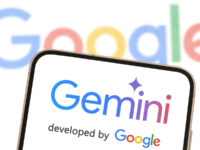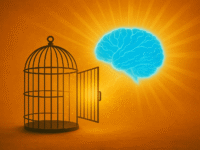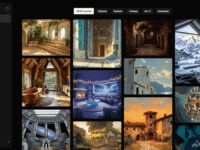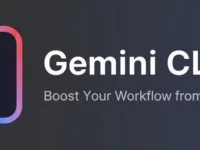Publié : 7 October 2025
Actualisé : 2 weeks ago
Fiabilité : ✓ Sources vérifiées
Je mets à jour cet article dès que de nouvelles informations sont disponibles.
In an announcement that shakes the worlds of entertainment and technology, Mattel , the giant behind icons like Barbie and UNO, has formalized its partnership with OpenAI , the artificial intelligence lab behind ChatGPT. This strategic collaboration aims to integrate Sora 2 , their cutting-edge video generation AI, into the design and development of toys and, potentially, board games. The objective is clear: to propel Mattel towards a global entertainment empire by harnessing the revolutionary capabilities of AI. This initiative, revealed at OpenAI DevDay on Tuesday, October 6, 2025, is much more than a simple technological novelty. It symbolizes the convergence of two industries seeking to redefine themselves: Mattel wants to transform its brands into dynamic, ubiquitous intellectual properties, while OpenAI seeks to legitimize and extend the application of its most advanced, but also most controversial, technology
💡 Sora 2: OpenAI’s Revolutionary World Simulator
Forget rudimentary clips. Sora 2, launched just last week, represents a major breakthrough in video generation. OpenAI describes it as a “world simulator”, capable of transforming a simple text description or sketch into a fluid, realistic video. What sets it apart from its predecessors is the integration of perfectly synchronized sound, whether dialogue, music or sound effects, adding an unprecedented layer of immersion. A particularly noteworthy feature is “Cameo”, which allows real or fictional people to be inserted directly into the generated videos. For Mattel, the benefits are obvious and manifold. A Hot Wheels concept, for example, could be rapidly transformed into a cinematic racing sequence in a matter of minutes, radically speeding up pre-production and concept testing cycles, and reducing development costs at the same time
💡 A multi-faceted strategic alliance
This partnership is part of a logic of survival and expansion for both entities. For Mattel, buoyed by the phenomenal success of the Barbie movie, the ambition is to take its brands beyond physical products and turn them into global entertainment franchises. Creating films, series or interactive content is expensive and time-consuming. Sora 2 promises to turn this equation on its head by making video pre-production faster and more affordable. For OpenAI, partnering with such an iconic family brand as Mattel is an invaluable communications operation. At a time when Sora 2 is facing accusations about deepfakes, copyright and the impact on creative employment, this partnership helps forge a narrative focused on “responsibility” and “thoughtful” innovation, attempting to counter ethical concerns with a fun, mainstream application
💡 Hollywood Trembles, Board Games Reinvent Themselves
The impact of video AI on the content industry is already palpable. Producer Tyler Perry, having seen Sora’s capabilities, paused an $800 million studio project, judging that the technology could make traditional physical sets obsolete. But it’s in the board game hobby that the integration of Sora 2 promises some fascinating transformations
- Impactful Marketing: No more low-budget trailers. Even small publishers will be able to generate cinematic trailers for their crowdfunding campaigns, at a fraction of the current cost, making their projects more attractive and accessible.
- Game Tutorials: Sora could create visual and engaging “how to play” videos, making complex rules more digestible and new games easier to tackle for a wider audience.
- Augmented Gaming 2.0: This is perhaps the most exciting aspect. Companion applications could offer immersive video narratives generated on the fly. Imagine an investigative game where the app generates a unique short video of a crime scene with visual clues specific to each game, merging the tactile experience of the board with digital visual richness.
💡 The other side of the coin: Challenges and ethical issues
Despite the promises, the mass adoption of generative AI raises serious concerns. The question of copyright is paramount: Sora 2 has been trained on immense volumes of visual data, whose provenance and licenses remain unclear. This is causing concern among artists and illustrators, who fear that their work will be devalued and their intellectual property plundered. Ethics and safety are also at the heart of the debate. Mattel claims to want to introduce these technologies in a “safe and responsible” way, but the precedent of “Hello Barbie”, the connected doll withdrawn in 2015 following a privacy scandal, is a reminder of the need for constant vigilance. Sora 2’s Cameo feature, allowing any person to be inserted into a video, heightens fears of deepfakes and potential abuse. Finally, the threat of creative standardization hangs over the industry. By relying on the most popular or effective styles for training, AI could serve us an “algorithmic visual soup”, less diverse, less daring, and potentially devoid of the singularity that emanates from human creativity. This raises the fundamental question of the impact on children’s own creativity:
“Children’s creativity flourishes when their play comes from their own imagination, not from an AI dictating style or story. It’s crucial to preserve this space for personal invention.” – The Fairplay association, commenting on the impact of AI on gaming
💡 A New Era, Under Active Surveillance
The partnership between Mattel and OpenAI marks a decisive step, opening the door to enriched play experiences and accelerated creative methods. However, this revolution cannot ignore the fundamental questions it raises in terms of ethics, copyright and employment. For gamers, authors, publishers and parents, the time has come to take action rather than simply observe passively. Should we ban these tools or experiment with them, understand them and participate actively in the debate on their regulation? Mattel has made its choice. With Sora 2, the company is no longer just looking to sell games, but to generate entire worlds. It remains to be seen whether these worlds, designed by AI, will resonate as much as those forged by the human imagination
💡 Key points of the Mattel-OpenAI and Sora 2 partnership
❓ Frequently asked questions
What is Mattel’s main strategic objective in partnering with OpenAI and Sora 2?
What makes Sora 2 a major advance over previous video-generation AIs?
How can Sora 2’s “Cameo” functionality be put to practical use by Mattel?
🎥 Explanatory Video
Video automatically selected to enrich your reading
📋 Sommaire
- 💡 Sora 2: OpenAI's Revolutionary World Simulator
- 💡 A multi-faceted strategic alliance
- 💡 Hollywood Trembles, Board Games Reinvent Themselves
- 💡 The other side of the coin: Challenges and ethical issues
- 💡 A New Era, Under Active Surveillance
- 💡 Key points of the Mattel-OpenAI and Sora 2 partnership
- ❓ Frequently asked questions
- What is Mattel's main strategic objective in partnering with OpenAI and Sora 2?
- What makes Sora 2 a major advance over previous video-generation AIs?
- How can Sora 2's "Cameo" functionality be put to practical use by Mattel?
- 🎥 Explanatory Video





















0 Comments